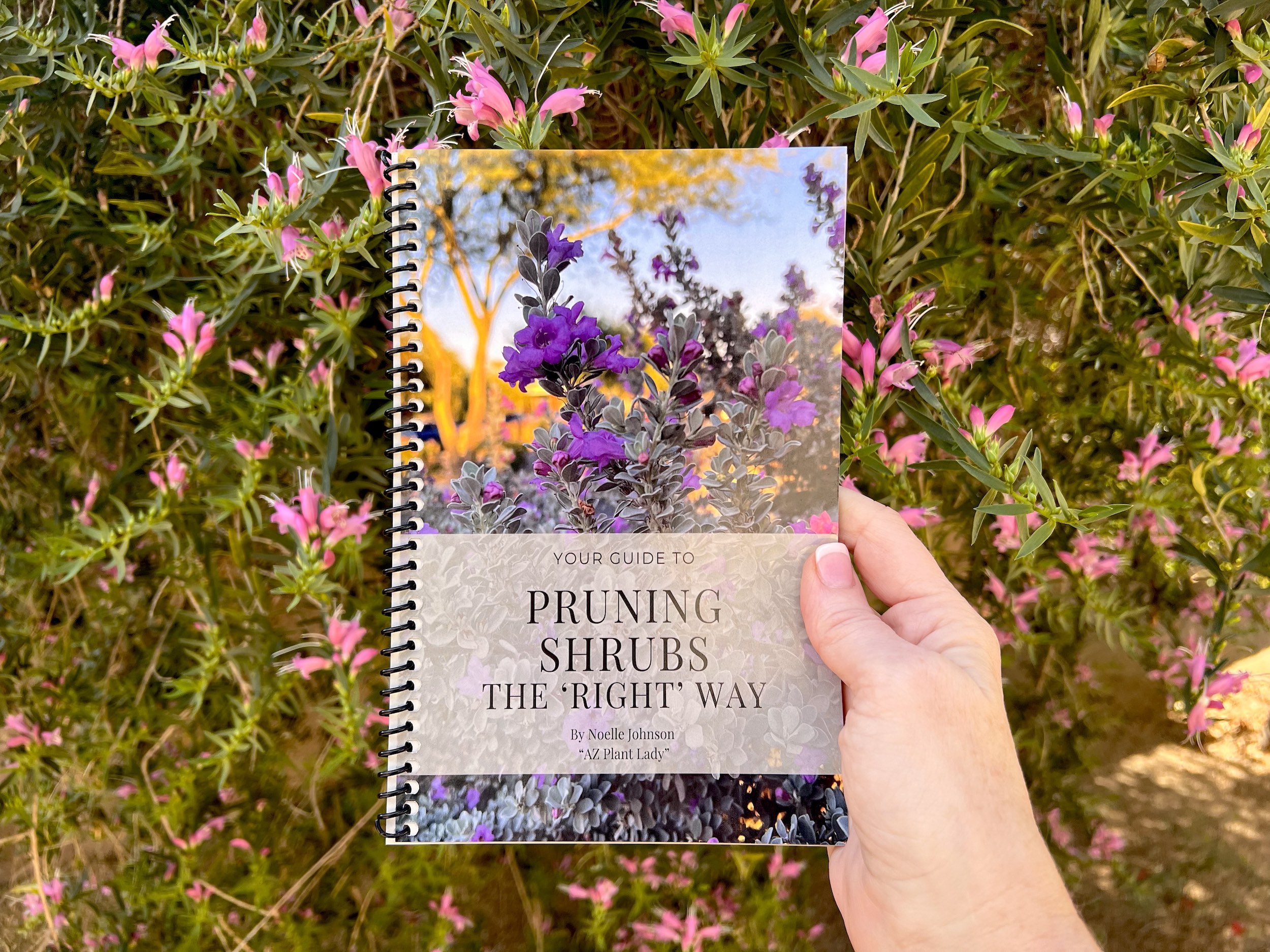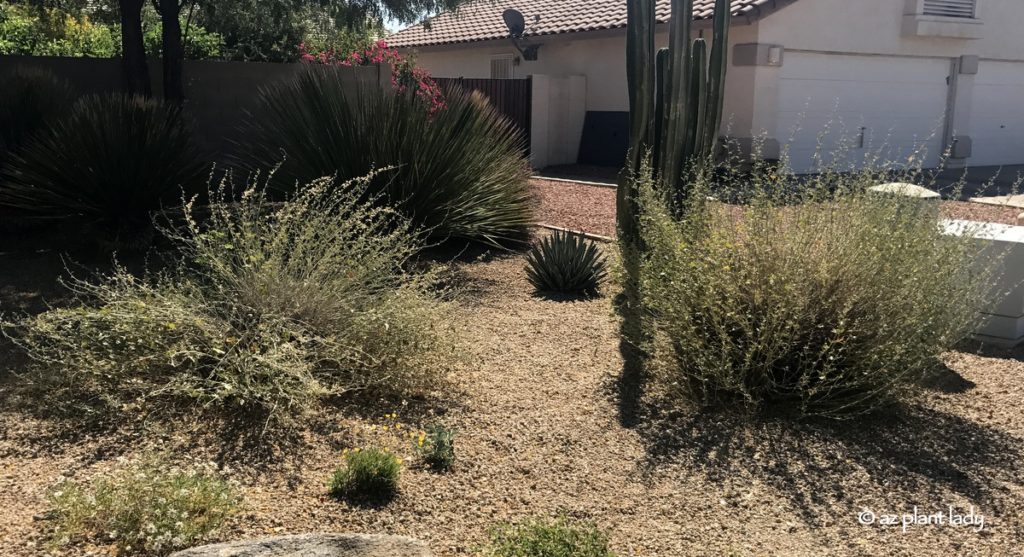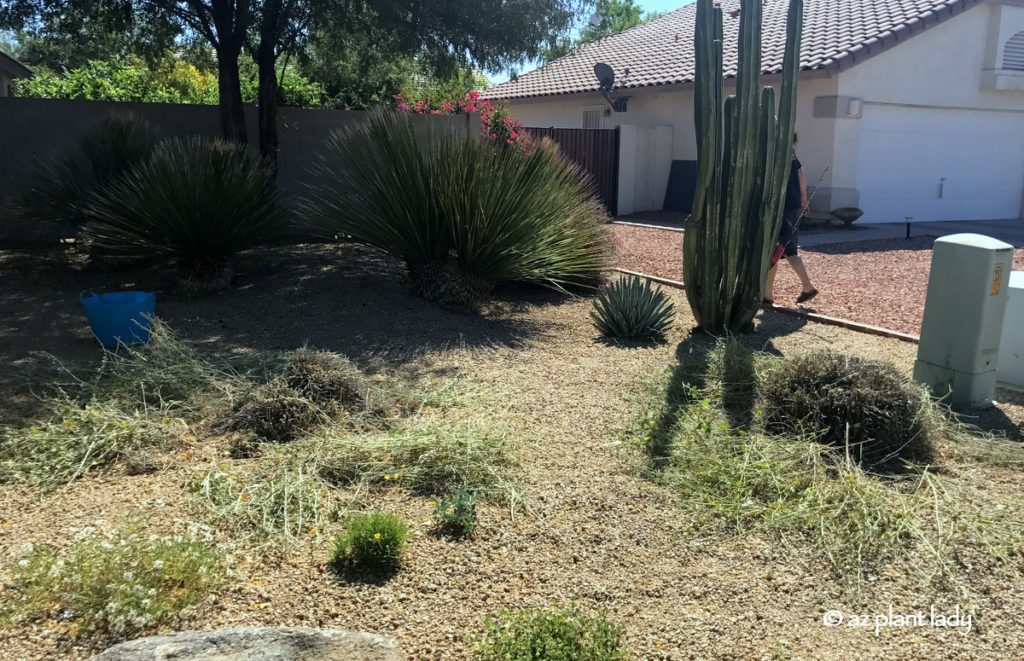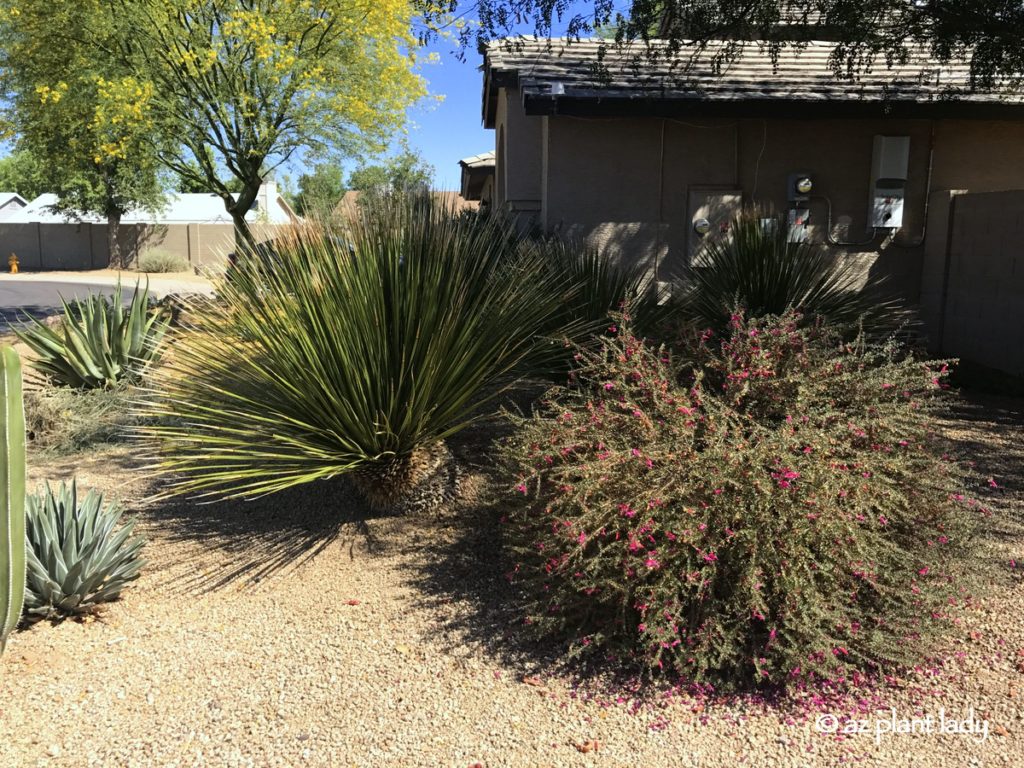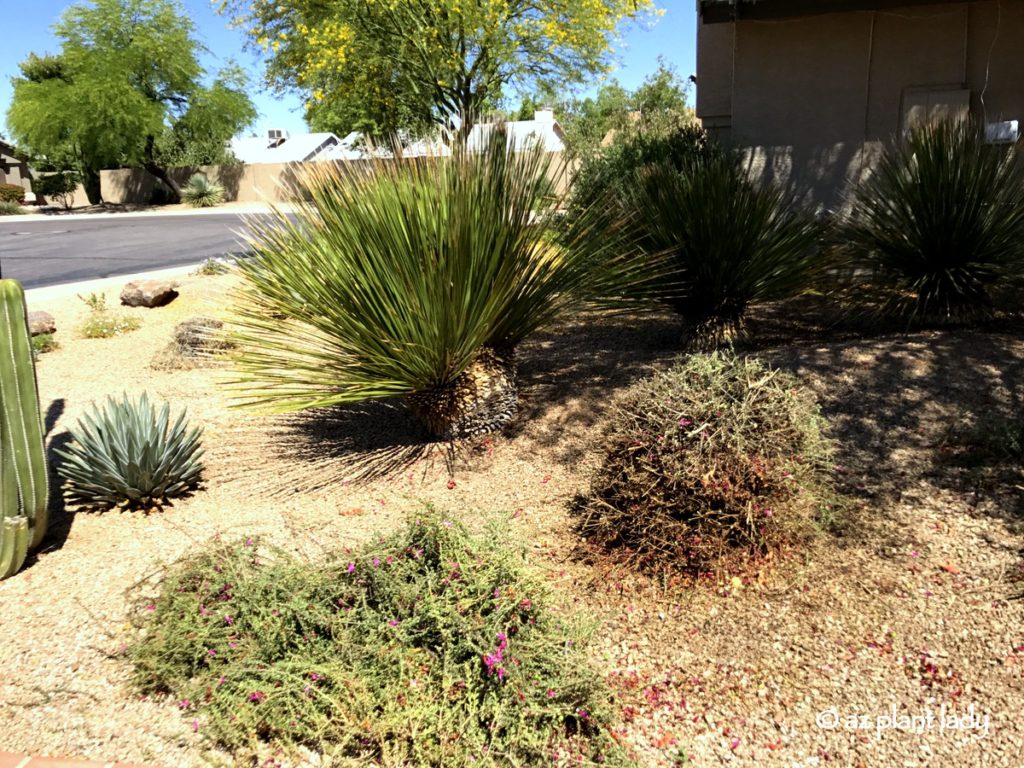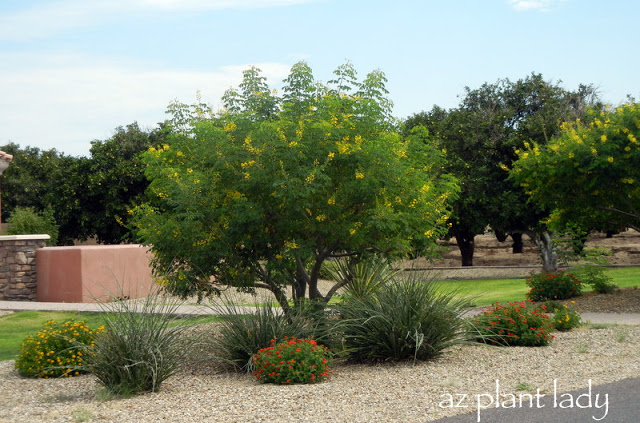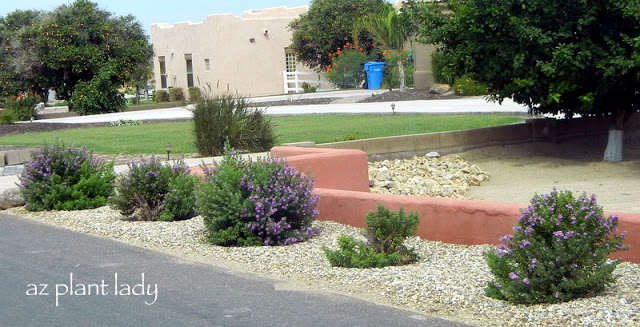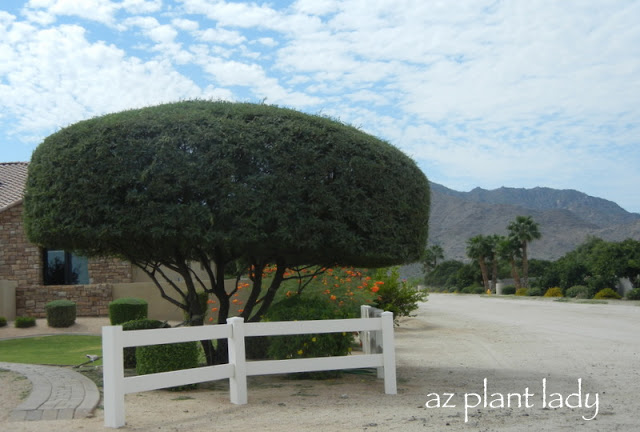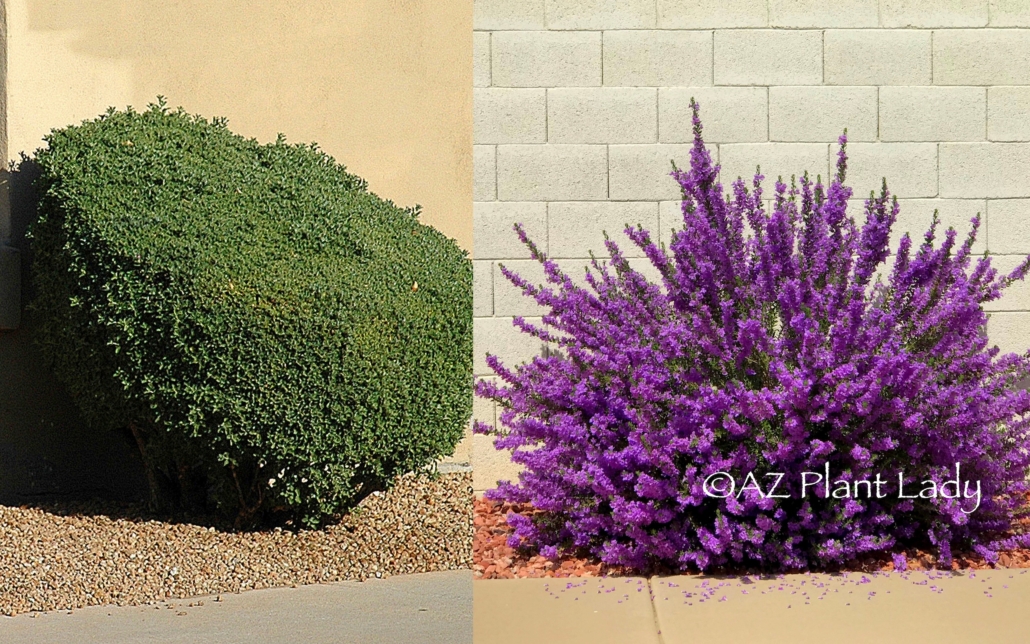
Which shrub would you rather have in your landscape?
I will step in and say that you will likely prefer the pretty flowering shrub on the right.
And yes, they are the same type of shrub.
The homeowners who own the shrub on the left spend a lot of time and money to keep their flowering Texas sage looking like a green blob.
On the other hand, the owner of the shrub to the right spends little time or money on maintaining their shrubs and how glorious it looks!
My largest pet peeve in the desert garden is the practice of frequent shearing of flowering shrubs into unnatural shapes.
And you know what?
Most of my clients and audience agree that this type of pruning does not enhance the curb appeal of their property.
And, you know what else?
This type of formal shaping isn’t healthy for shrubs for the following reasons:
- It removes the foliage they need to make food and energy for themselves.
- Pruning stimulates faster growth as they try to re-grow the foliage lost, increasing maintenance.
- Shrubs that are sheared often use more water than those that are pruned less frequently.
- Blooms are cut away before they have a chance to open.
- Over time, sheared shrubs experience dieback and have a shortened lifespan.
And, let’s state the obvious:
These sad shrubs are repeatedly stripped of their beautiful, natural shape and vibrant flowers.
Now, not all pruning is bad. Shrubs appreciate proper pruning practices, and spring is the busiest time for most pruning tasks.
When I meet with clients, I give them customized pruning advice, and most are shocked to learn that their shrubs only need pruning once a year or less!
I want you to have the information to save time and money while enjoying a better-looking landscape filled with colorful, flowering shrubs.
So, I have created a resource guide to show desert dwellers like you how to prune shrubs correctly.
I always aim to break down desert gardening how-to’s into simple, easy-to-follow steps, which this guide does.
Do you have any balls, squares, or cupcakes in your landscape? I will show you how to rehab them into naturally shaped shrubs.
If you have a landscape that maintains your shrubs, the guide also has helpful solutions for communicating your preferences regarding pruning. You may find that you require their services less often, saving you money.
Specific guidelines for over 40 popular bloom shrubs are contained within the guide.
The guide is available as a spiral-bound booklet or as a digital download.
Click this LINK to learn more and get your copy!


